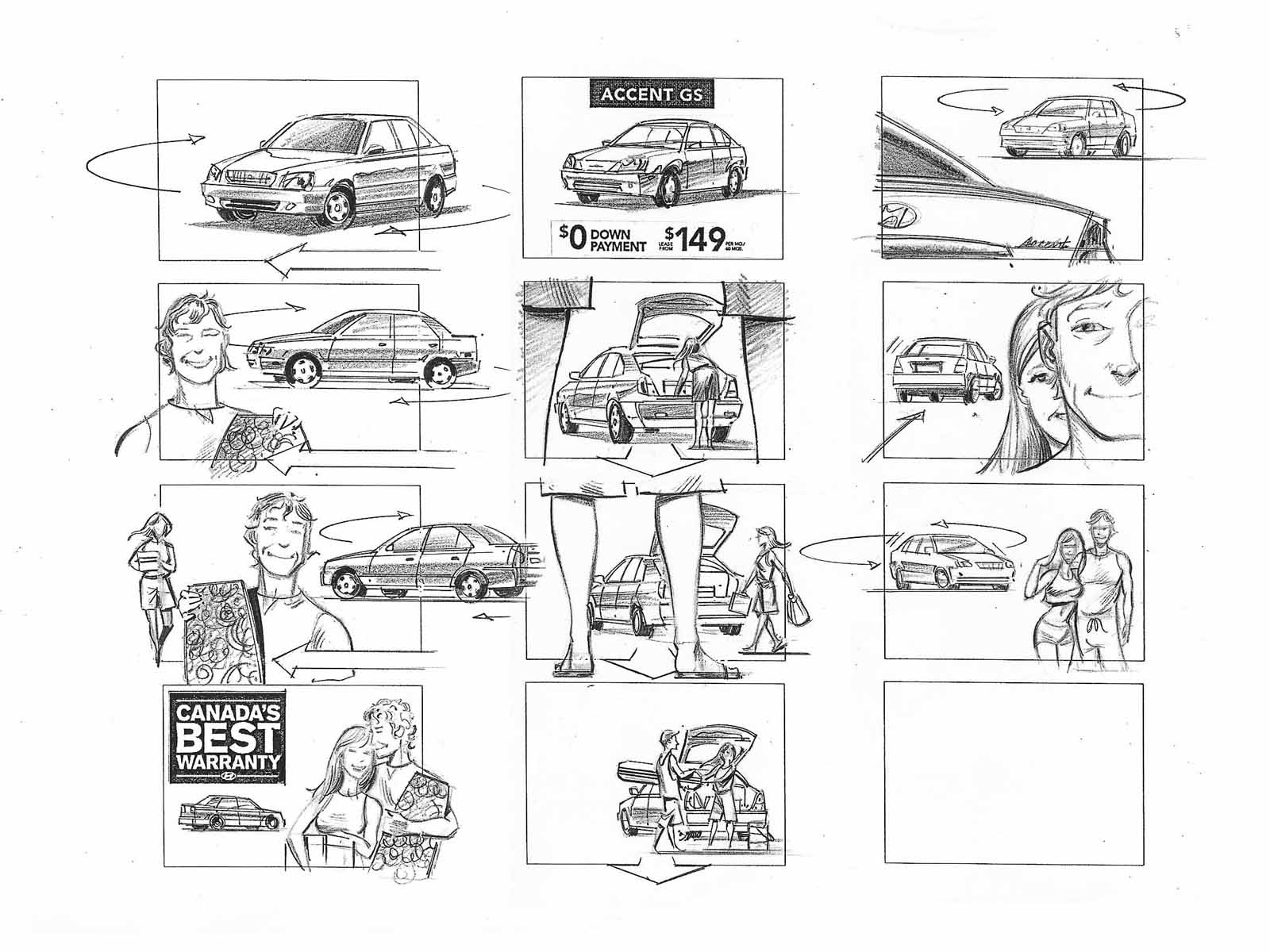What is a story board?
A storyboard is a group of images (also known as illustrations) which are displayed one after the other in order of how a caption/animation will appear once it's been created. This is a form of seeing how a project will progress and it's a plan of how things will be shot (i.e. use of lighting, zoom etc...). Disney films are know for their story boards as the Walt Disney Studio developed it in the 1930's, this method is very useful and therefore still used today.
Planning a story board
When creating a storyboard its best to consider and include what is known as the 5 W's (who, when, what, where and why). This will make it easier to come up with a storyboard especially the main section. Apart from these elements you also need to consider the plot, setting, introduction, dialogue, narration, any points of view, the protagonist and antagonist. Plot
A plot is a group of events which provide information/idea it is not a story even though many people refer to it as a story. It is also known as the "spine" without a plot there are no actions in a story. A story portrays emotions therefore combining a plot with a story adds actions and emotions. Plots tend to be actions or choices that the characters have made which leads into events occurring. In linear plots there is a beginning, middle and end which was first set by Aristotle. Even though there is a linear structure plots don't need to be linear nowadays many films have the end of the film at the beginning and then travel back in time to the rest of the film. Plots tend to be set using a timeline this is to help see where events occur.
Below are 5 important aspects of a plot:
- Introduction: This is the start of any plot where the situation is introduced and the audience are given an idea of what the film, play etc is about.
- Rising Action: This refers to events just before the climax, here you can see the struggles and problems of the character(s) (mainly the protagonist)
- Climax: It is mainly the most interesting section of a narrative as the protagonist changes their point of view and decides to do something about the situation. It also makes the audience wonder what the outcome will be in the end.
- Falling Action: This is where the end result is doubted mainly because the protagonist and antagonist confront each other and resulting in one of them winning.
- Denouement: This is the end of the film with the events of how the plot ends.
Setting
Setting is the time and location in which the events of the plot occur. It is an essential part of a plot as it determines the atmosphere of the event taking place. Within setting aspects such as the weather or any social conditions are also important.
Points of view
This refers to the way a narrative is portrayed and how it is seen by the audience. There are points of view used in films, plays etc...
- Protagonist (first person): The narrative is told either by the protagonist which the story is told through their eyes and we see what they are feeling thinking etc...
- Stream of consciousness: The narrative is portrayed in such a way that it makes the audience feel like they are in a characters head (they can experience and see their thoughts and reactions, opinions etc...).
- Omniscient Limited: The narrative is told using the third person with pronouns, this form of point of view only tells the audience what the character knows and nothing else. The audience will be able to see the characters thoughts, feelings, actions etc..(only if the author allows the character to do so).
- Omniscient Objective: The narrative is told using the third person the camera only records what the character sees or hears. The are no comments or voice overs explaining what is occurring therefore the audience interprets what they are seeing in their own way.
- Innocent Eye: The narrative is told by someone innocent normally a child as their opinion and judgements would differ to an adult.
Examples of storyboards
Below I have displayed examples of storyboards used for films, TV series, adverts etc...
Resources
http://illustrations.greghigh.com/nosecond_storyboard.jpghttp://business901.com/wp-content/uploads/2010/10/kiaboard.jpg
http://www.sotherden.com/video101/storyboard.htm
http://en.wikipedia.org/wiki/Storyboard
http://www.tameri.com/write/plotnstory.html
http://hrsbstaff.ednet.ns.ca/engramja/elements.html
http://contemporarylit.about.com/cs/literaryterms/g/risingAction.htm
http://en.wikipedia.org/wiki/Climax_(narrative)
http://en.wikipedia.org/wiki/Dramatic_structure


No comments:
Post a Comment